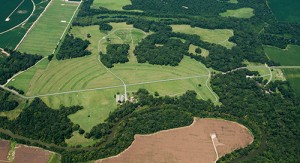
Quickly now, how many World Heritage Sites are in the United States? Well, there are twenty-two most administered by the National Park Service (NPS). The others are managed by various other interests – states, private foundations, the Commonwealth of Puerto Rico, and an Indian tribe. The United States and Canada jointly nominated two World Heritage Sites: Waterton-Glacier and Wrangell-St.Elias/Glacier Bay/Tatshenshini-Alsek/Kluane. The most recent World Heritage inscription was for Poverty Point in Louisiana, which was voted on in the fall of 2014 in Doha Qatar. For more information on all the U.S. World Heritage Sites visit the National Park Service’s web site.
Why is recognition as a World Heritage site important? The motivations vary from country to country, but include such factors as national pride and of course the economic value of increased attention and tourism. In the past, the U.S. involvement the program has not been touted. A site’s World Heritage status was only recognized in the fine print in a brochure or by a small plaque. However, this is changing. Along with the updated web site on World Heritage, the NPS has recently developed a new travel itinerary for the World Heritage Sites in the United States. The itinerary provides a description of the heritage values of each of the properties and offers information on how to plan your visit. And for younger visitors, they can become a ” World Heritage in the United State Junior Ranger. ”

Today there is growing interest in achieving World Heritage designation for more places in the United States. And we can certainly ask for more, after all, Mexico has 32 sites and even Cuba has 9! So how do properties advance through the process and what sites will be next? Well one way to see what might be coming up is to look at the tentative list, see World Heritage in the United States: The U.S. Tentative List 2008. This report presents the tentative list as of that date and describes the criteria and process for inscription of potential new sites. As for the future, the NPS has announced that it is in the process of developing the next tentative list with a target date of 2016. This is a great opportunity for the public to be engaged in identifying what they think is worthy of World Heritage designation and to build greater knowledge of the program.
And awareness of World Heritage is very important as the program is at a critical juncture in the United States, but that is another story. Read more about this in US World Heritage Program at Risk. In the meantime many thanks to the NPS for running a great promotional campaign and special Junior Ranger badges to all who support this effort!


